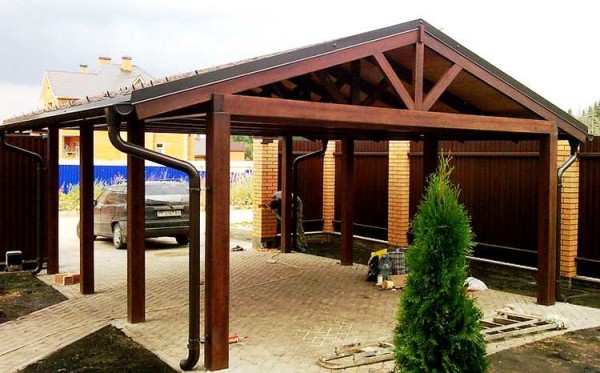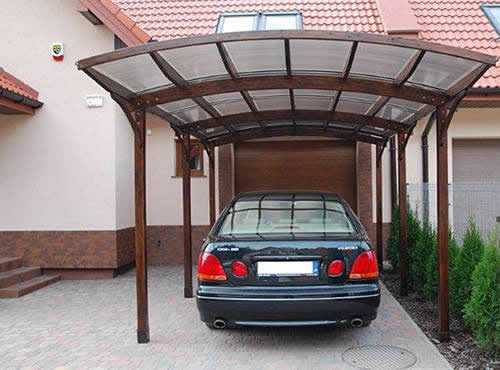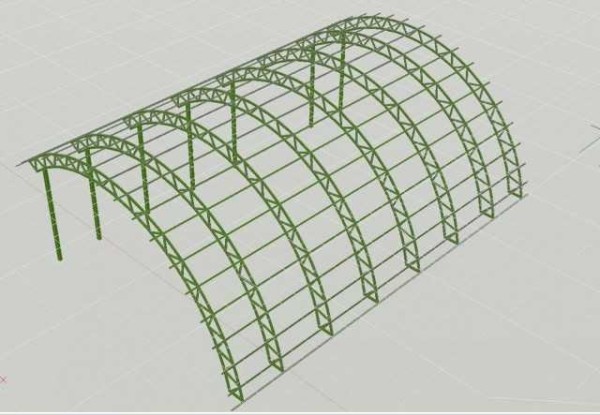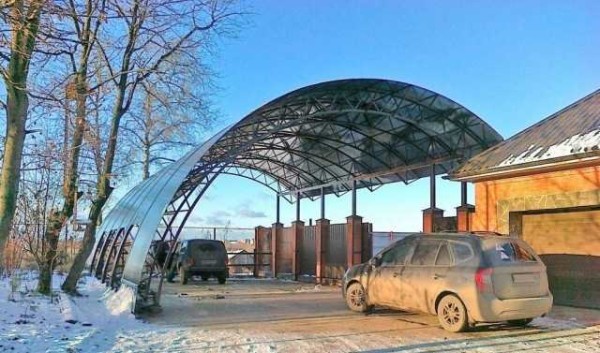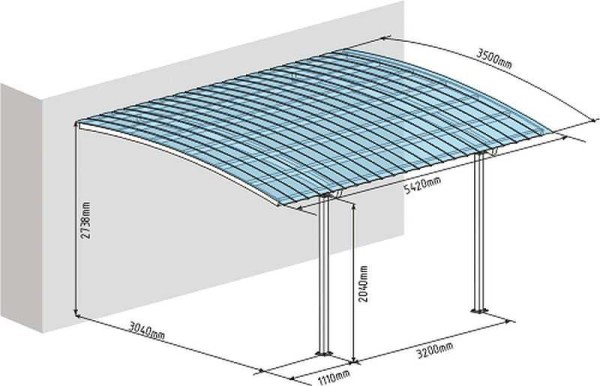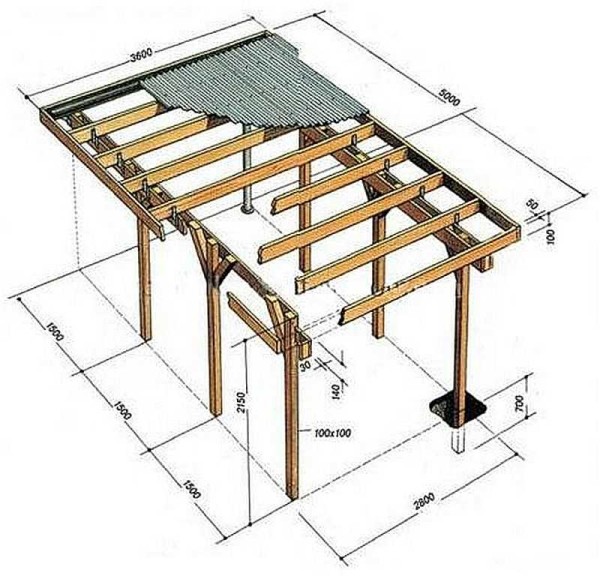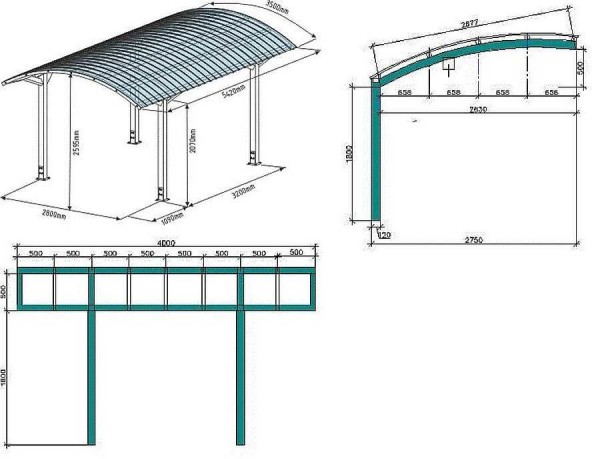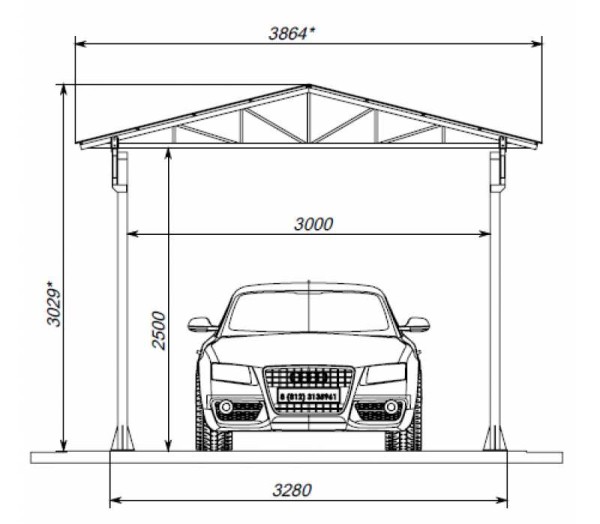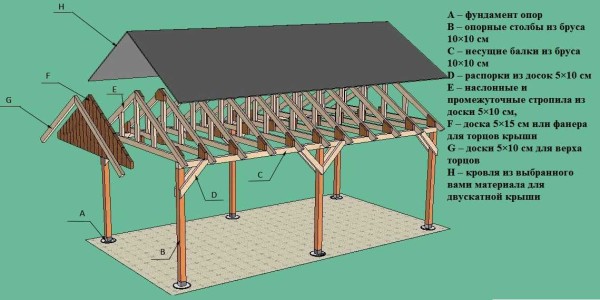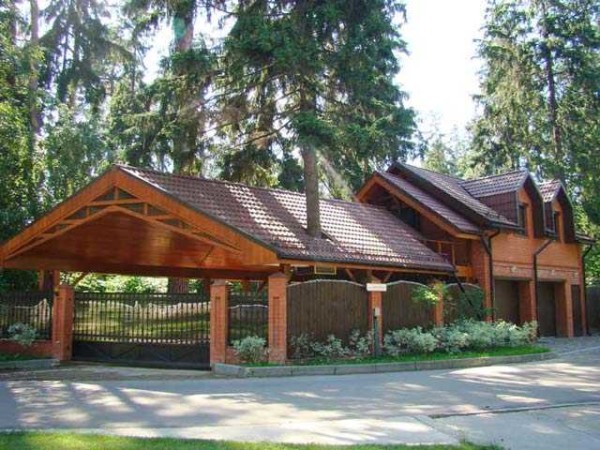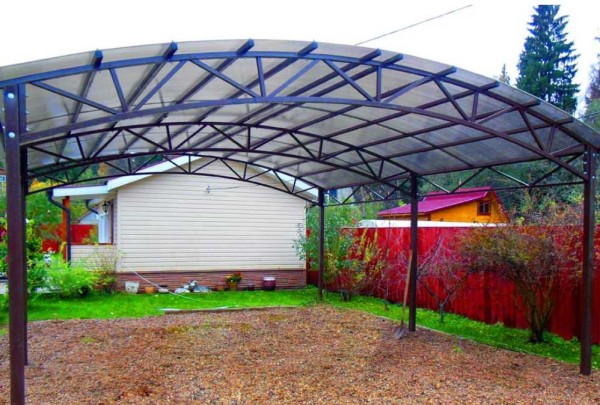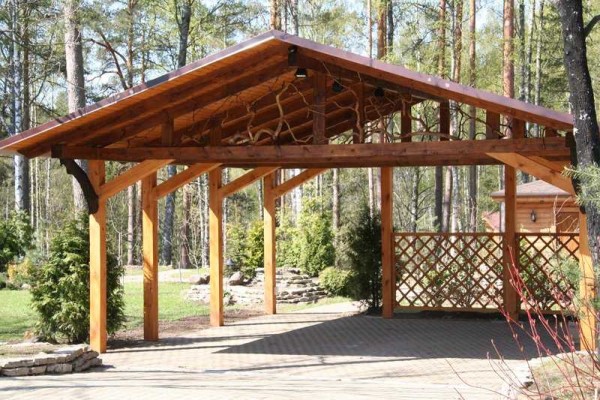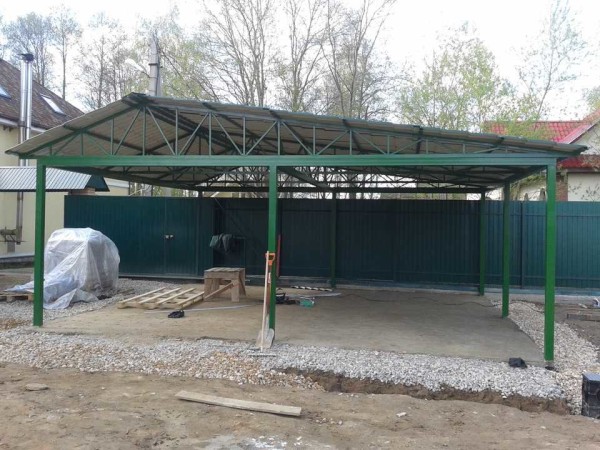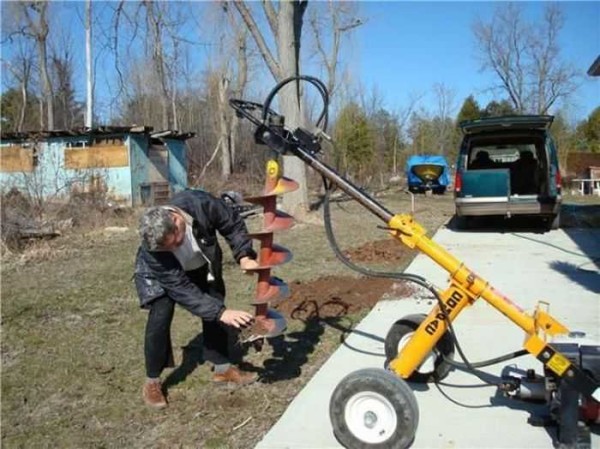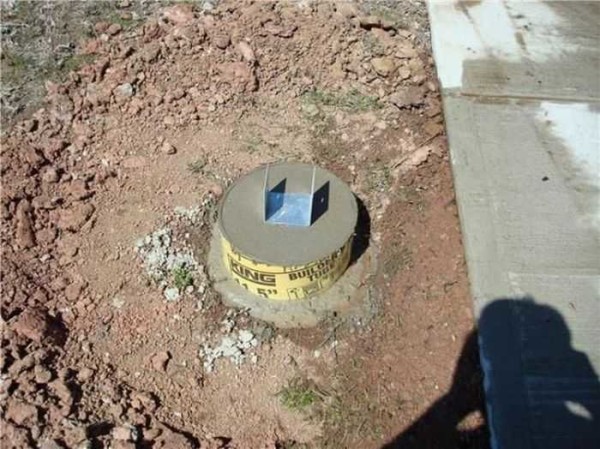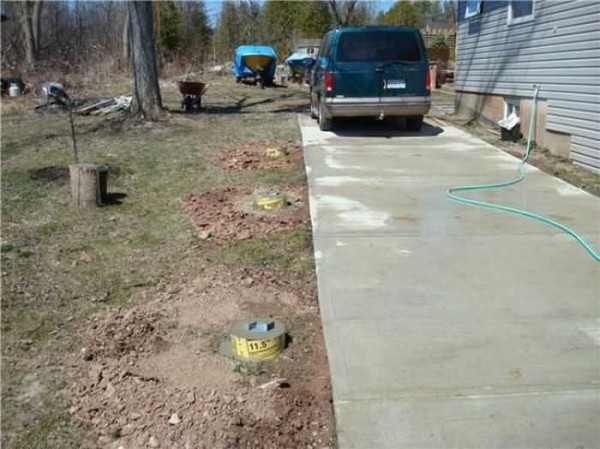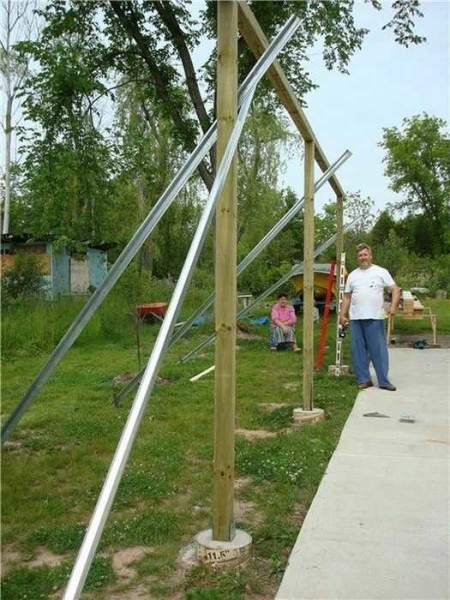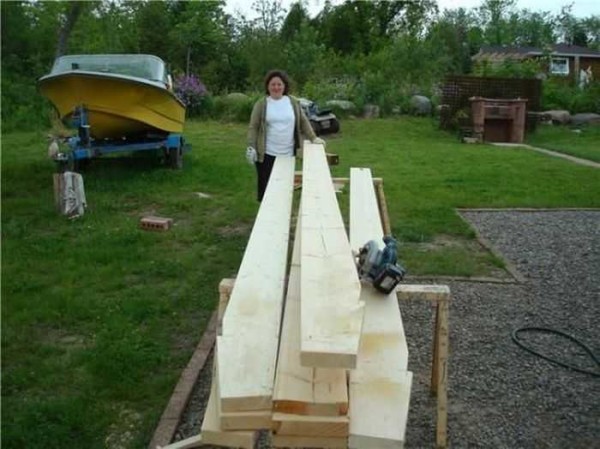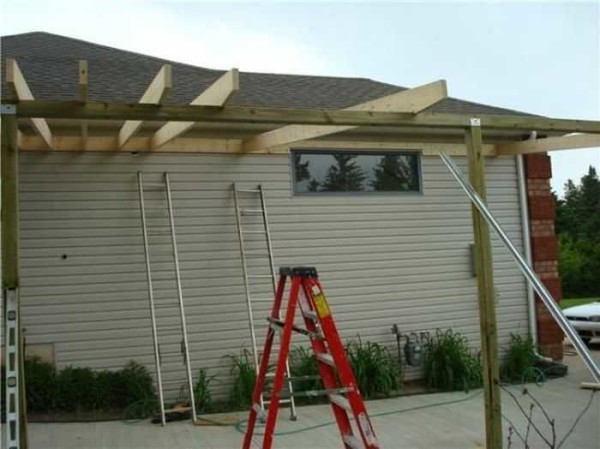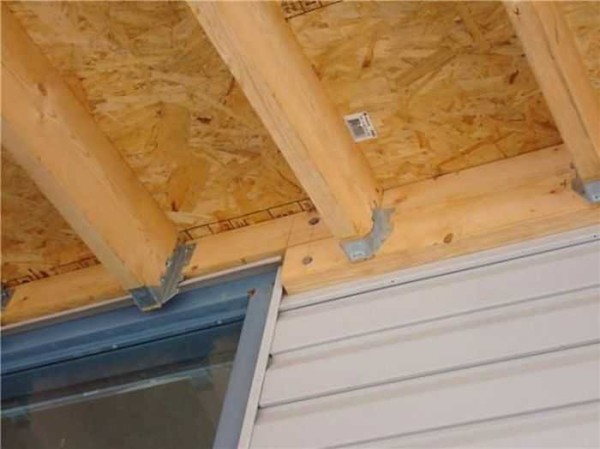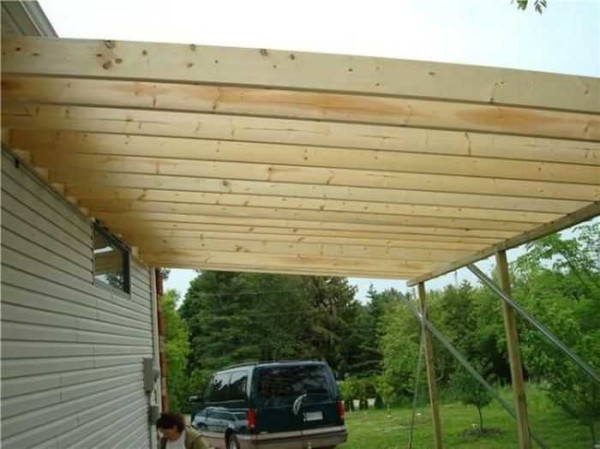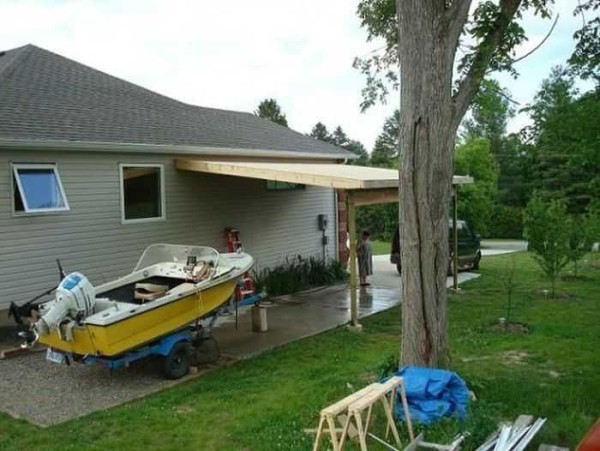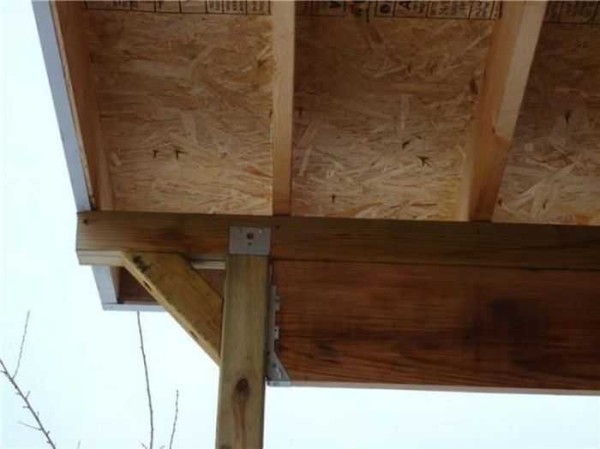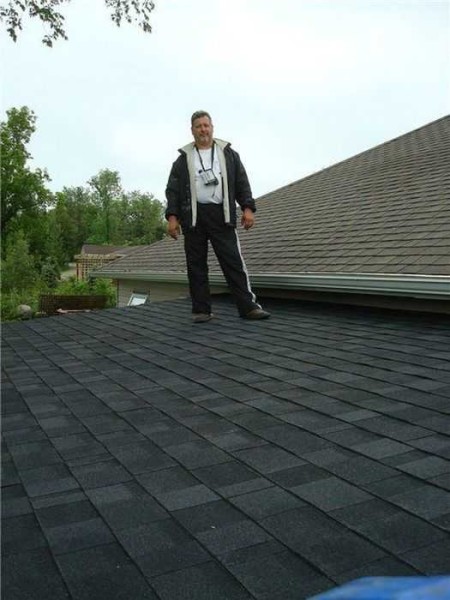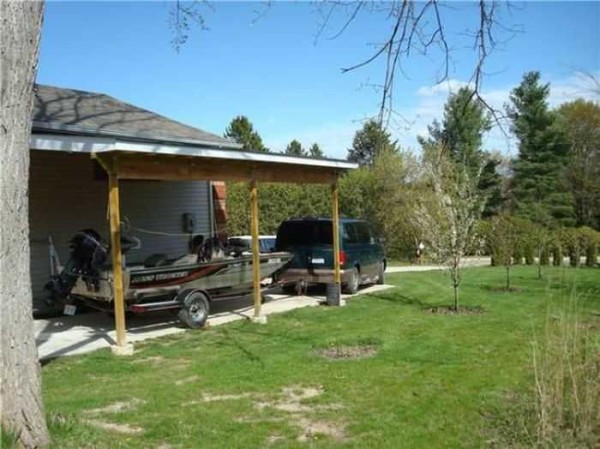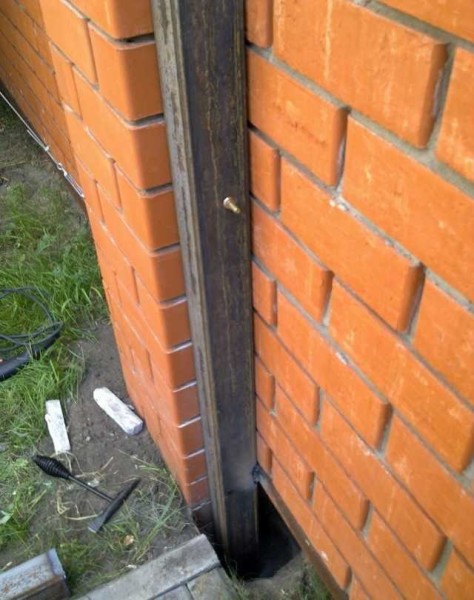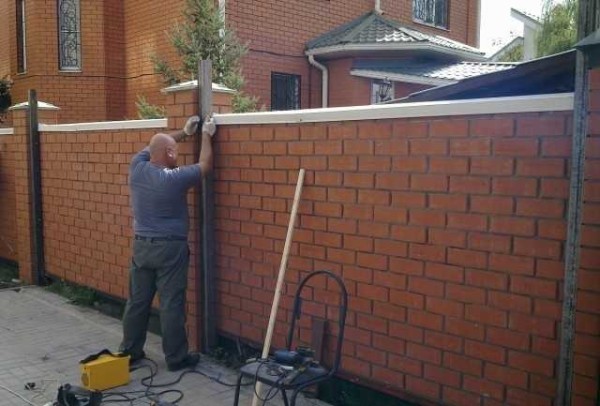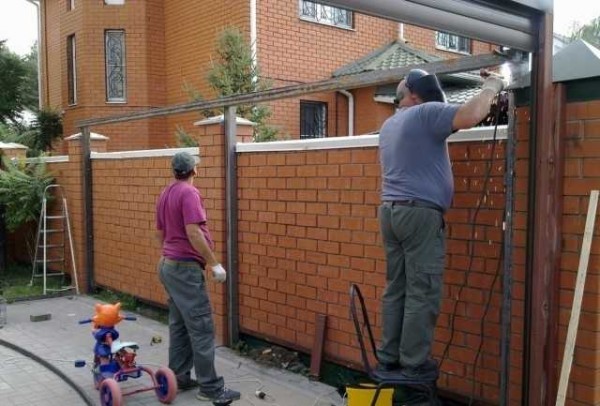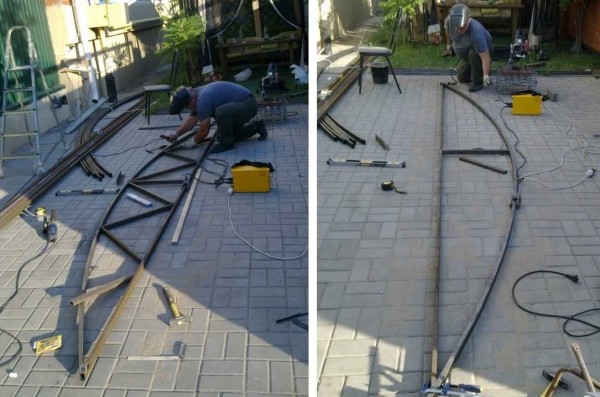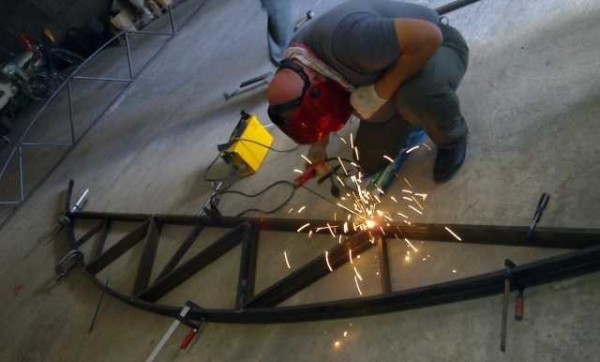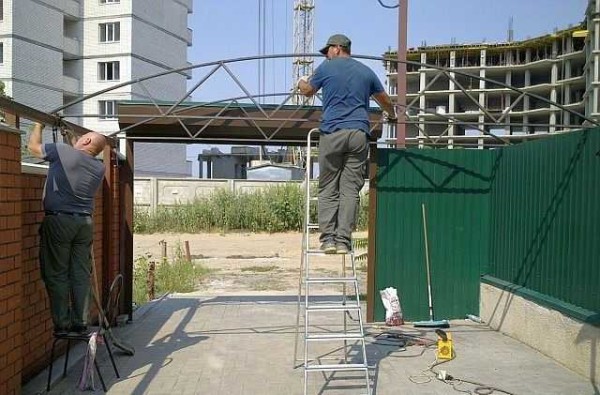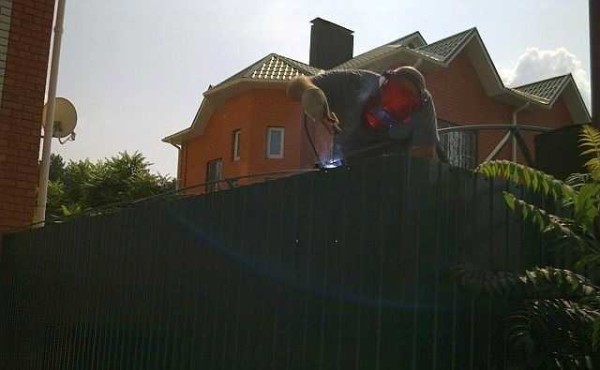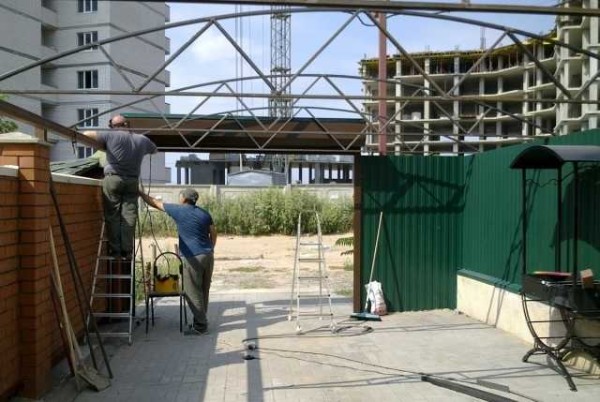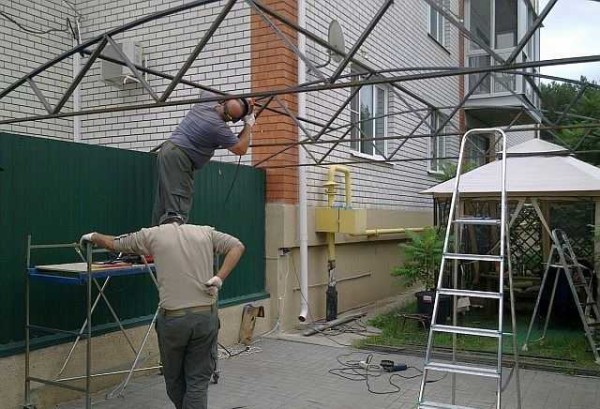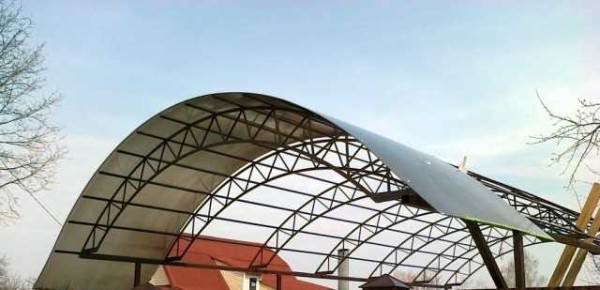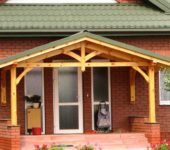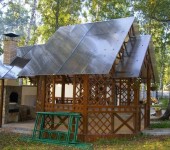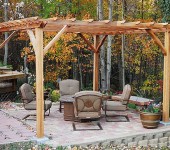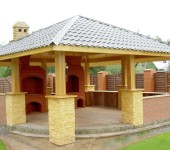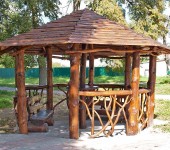We make a carport made of wood, polycarbonate
Immediately after the construction of the house, and sometimes "before" the question of parking arises. It is not always possible to build a major garage, but putting a roof on poles - a canopy - is already easier and cheaper. The carport can be a free-standing structure. Then it is located in the yard, as a rule, not far from the entrance gate or garage. The second option is attached to the house, when one or more sides of the roof rests on the wall of the building. In terms of functionality, both options are equivalent, just everyone chooses based on personal requirements and preferences.
The content of the article
Dimensions
Since the dimensions of cars can vary significantly, in each case the optimal dimensions are determined depending on the available car.
The height is usually around 2.5 meters. This is more than enough even for an SUV with a loaded trunk. And to determine the length and width of the canopy, at least a meter is added to the external dimensions of the machine. Agree, it is quite enough if there is a distance of half a meter to the posts.
But to protect against precipitation, it is better to make the overhangs of the roof longer: they will also cover from slanting rain and snow.
When determining the size of the carport for two cars, the distance between the rear-view mirrors is taken to be 50 cm. The same is considered to the posts. And the length of the canopy is determined by the longest car.
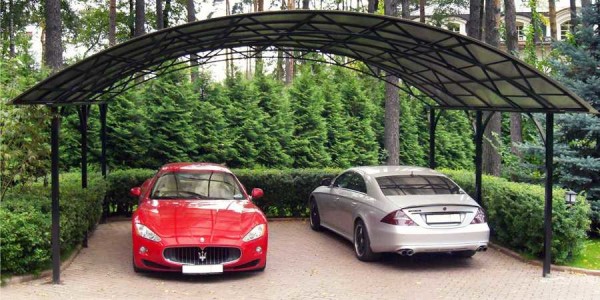
When calculating the width of the canopy for two cars, the distance between the rear-view mirrors is taken to be 50 cm.To the posts, it is also considered half a meter
Frame materials
Basically, wood is used for supports - a bar or a log, a metal pipe of a round or rectangular section. Sometimes the supporting columns are made of brick or stone. They are more massive, attract more attention, therefore they should fit into the style of the building that is located nearby.
There are also options when the bottom of the support column is made of brick, and the top is made of wood or metal. And in this case, everything is determined by the style of the house and the site. You should not make brick supports if there are restrictions on the size of the site: they are quite massive and take up a decent amount of space.
All materials (except brick) are processed before use. The wood is necessarily covered with fire retardants (reducing the flammability of the material). Then it is impregnated with compounds that will protect it from damage by wood-boring insects, as well as from all weather conditions.
Particular attention should be paid to the processing of wood, which will be buried in the ground. It can be impregnated with special compounds for wood in contact with soil (for example, Senezh Ultra and its analogues). The impregnation in working off showed itself well. The ends of the pillars that will be buried are immersed in a container with working off for a couple of days. Once dry, they can be used without additional measures. 10 years is enough.
The second option is to pour a concrete pillar into the ground, and mount a mortgage plate, shoe or hairpin into it, to which a wooden beam is then attached.
Metal pillars are cleaned from rust, covered with a primer. After welding, the seams are additionally processed and everything is covered with paint in two layers. The second one is applied after the first layer of paint dries to a tack-free state.
Roof types (with drawings and dimensions)
The most economical and simple is a pitched roof.Usually it is used if the carport is attached to the house: this is the easiest way to organize a normal abutment to the wall.
A pitched roof is also made for free-standing awnings. In regions with little snowy winters, you can make a roof without a slope, in those where there is a lot of snow, a slope of at least 8-10 ° is required. In this case, the lower side is made from the south or east: so that there is more shadow. Also in this case, from the south side, you can sew up the canopy on the side (or plant tall plants there).
If a canopy is made of polycarbonate, then the roof is made vaulted. It is also optimal in terms of precipitation and is easy to implement due to the flexibility of this material.
A more complex gable roof. If made of metal, it has a relatively simple structure.
In the case of a wooden shed under a gable roof, the system is multi-component.
>
Roofing material
If a carport is attached to the house, it makes sense to make its roof from the same material. For soft types of roofing (flexible tiles, ondulin, etc.), a continuous lathing is required, for hard ones - a thin one, and the step is chosen depending on the wind and snow loads in the region, focusing also on the recommendations of the manufacturers of roofing material.
If complete shading is not required, polycarbonate can be used. By the way, it is the most popular material in recent years. Only you need to choose it correctly: take a multi-chamber one, having at least three layers of plastic and two rows of cells. It is not hot under such a polycarbonate canopy, even on a sunny day.
Also, the degree of heating depends on the color. See the technical specifications and choose the one with the highest absorption of sunlight. Transparent ones are needed for greenhouses to warm plants. For awnings, on the contrary, you need polycarbonate with a low light transmittance.
How to lay out the site
The easiest and most inexpensive way to make a platform under a carport is to cover it with gravel. To do this, it will be necessary to remove the sod, dig in the curb, pour in crushed stone and tamp it well using ramming platforms. Then the site will be rigid and no ruts will be formed.
More popular in recent years are areas paved with paving slabs or paving stones. They have a more attractive appearance, but their device is more expensive. Preparation also begins: first, the soil is removed. But the pit is made about 20-25 cm deep. Crushed stone is poured at the bottom, which is also well rammed. Then it is advisable to spread a layer on the rubble geotextile... This is a non-woven material that will prevent sand from waking up, which will be poured on top, and mix with gravel. Geotextiles also redistribute the load more evenly, preventing the base from sagging under the wheels of a car (it is used in road construction). A layer of sand is already poured onto it, which is also compacted. Paving slabs, clinker bricks, cobblestones and other similar materials are laid in the sand.
In the middle of the cost is a concrete site. The base is also prepared from compacted rubble. Wooden planks are laid on it at a distance of 1 m, which are set at a level or with a slight slope for water drainage. These strips serve as beacons during pouring, and then act as damper joints, compensating for the thermal expansion of concrete. With this structure, cracks appear less often.
A galvanized wire mesh is placed between the strips. You can, of course, stainless, but it's expensive. The thickness of the wire is 3-4 mm, the cell is 10 * 10 cm. concrete not lower than M 250... The thickness of the concrete layer is 7-10 cm.
Do-it-yourself shed attached to the house (photo report)
It was decided to attach a shed to the house, under which to hide your favorite equipment - a car and a boat. First, with the help of a motor-drill, they dug holes 1.5 m deep - below the freezing depth.
We inserted sleeves made of waterproofing, a frame made of a 10 mm bar with welded inserts, and poured concrete.
The pitch of the posts is 2 meters.
When the concrete seized, the posts and the top harness were installed. They are sanded and treated with protective impregnation. So that the frame does not lead, they fixed it with what it was - aluminum corners. The joint of the racks and the strapping was reinforced with metal plates.
A support board was nailed to the wall of the house. Roof beams (board 50-200 cm) were attached to it. The slope turned out to be small, about 9 °, but it is enough. Small cuts are made in the beams for the size of the timber - for an emphasis, the edges are cut off to get an even overhang.
The beams were fastened to the strapping with nails obliquely, 2 pcs on each side.
The wall beams are fixed to U-shaped metal plates.
The rafter system is assembled - the beams were installed with a small step - 40 cm, they were made from a board of 50 * 200 mm.
OSB was attached to the rafters on top. Roofing material - soft tiles. A solid crate is needed under it.
A board was nailed on the side between the posts: for greater rigidity and so that the rain would wet the site less.
We laid soft tiles. It turned out - at least dance.
Now there is competition in the parking lot.
How to make a canopy for polycarbonate (photo report)
Used materials:
- professional pipe
- for racks 80 * 80 14.6 m;
- for arches 50 * 25 - 4 pcs. 6 m each + 50 * 25 - 10 pcs. 6 m for spacers;
- sand concrete - 3 bags of 40 kg.
- crushed stone - 4 bags of 25 kg.
- red lead - 3 cans of 1 liter each.
The canopy was made over the already finished path. The posts were buried in the gap between the curb and the fence. It turned out that the supports of the canopy were placed near the fence posts. It was decided to use them when setting the level: they attached them with anchors so as not to suffer during pouring.
The metal posts of the racks were buried 1.2 m in the ground, covered with rubble, and poured with concrete. When the concrete grabbed, the top harness was welded on.
After that, the manufacture of trusses began. First, profiles with the required radius were bent on the pipe bender (rise at the highest point is 1.2 m). After that, the assembly of the "constructor" began.
Clamps were useful, they were used to hold the parts together so that they did not move during operation. Fixed to the first farm so that everything was done accurately. There were a lot of clamps)))
When all the farms were ready, they were cleaned, sanded to white metal, then primed and painted twice. Then acrobatics began. It is necessary to install heavy trusses on poles, set them vertically, without knocking down the diagonals.
As soon as it was possible to set it correctly, they quickly grabbed it by welding, leaving a thorough welding of the seams "for later", but after the final check: everything should be on the same level.
A miracle happened, everything turned out to be almost on the same level. We do not take a small difference of a few millimeters into account.
Now we weld the crate from a profile pipe 50 * 25 mm for polycarbonate. we place them along the long side of the canopy. The installation step is 0.8 m.
It remains to attach the polycarbonate.It is fastened to self-tapping screws through special thermal washers (sold in the same place as polycarbonate). Two sheets are connected using special profiles. They are detachable and one-piece. One-piece is cheaper, but then you can't do anything else out of this polycarbonate. So we used detachable ones.
It is also necessary to close the edges of all sheets, otherwise dust and midges will cram inside, then moisture will appear due to fumes, and then mold. And the look of the cover will be deplorable. Therefore, we install special plugs on the edges.
Related Videos

